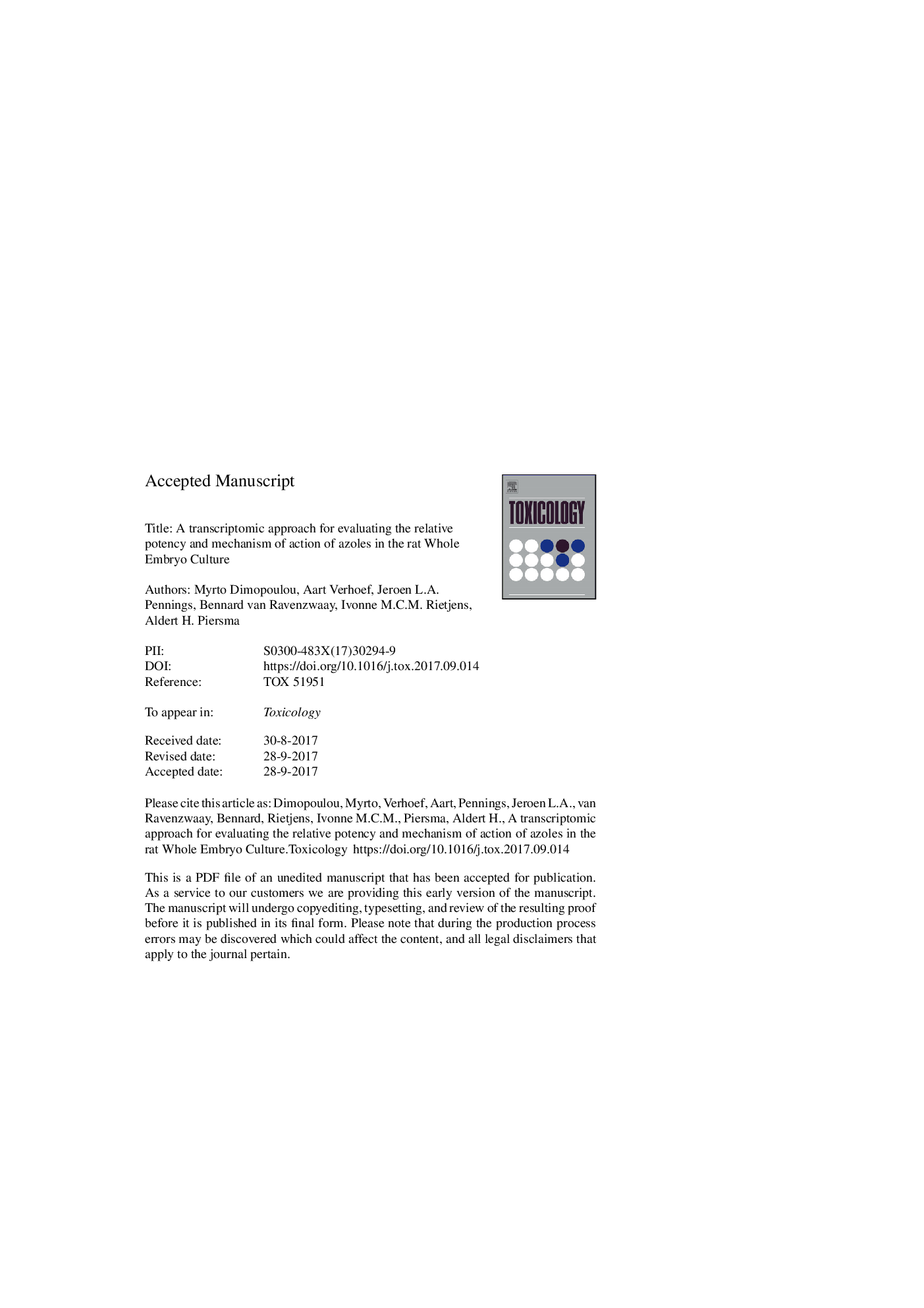| کد مقاله | کد نشریه | سال انتشار | مقاله انگلیسی | نسخه تمام متن |
|---|---|---|---|---|
| 8552980 | 1562280 | 2017 | 42 صفحه PDF | دانلود رایگان |
عنوان انگلیسی مقاله ISI
A transcriptomic approach for evaluating the relative potency and mechanism of action of azoles in the rat Whole Embryo Culture
ترجمه فارسی عنوان
یک رویکرد ترانسکتومیک برای ارزیابی توان نسبی و مکانیسم عمل آئول ها در کشت عمومی موش صحرایی
دانلود مقاله + سفارش ترجمه
دانلود مقاله ISI انگلیسی
رایگان برای ایرانیان
کلمات کلیدی
موضوعات مرتبط
علوم زیستی و بیوفناوری
علوم محیط زیست
بهداشت، سم شناسی و جهش زایی
چکیده انگلیسی
We evaluated the effect of six azoles on embryonic development in the rat whole embryo culture (WEC). Using the total morphological scoring system (TMS), we calculated the ID10 concentration (effective dose for 10% decrease in TMS). For evaluating gene specific responses, we combined previously and newly collected transcriptomics data of rat WEC exposed to a total of twelve azoles at their ID10 for 4Â h. Results revealed shared expressions responses in genes involved in the retinoic acid (RA) and sterol biosynthesis pathways, which are respectively representatives of developmental toxicity and targeted fungicidal action of the azoles. Azoles with more pronounced effects on the regulation of RA-associated genes were generally characterized as more potent embryotoxicants. Overall, compounds with strong sterol biosynthesis related responses and low RA related responses were considered as more favourable candidates, as they specifically regulated genes related to a desired target response. Among the identified sterol associated genes, we detected that methylsterol monooxygenase 1 (Msmo1) was more sensitively induced compared to Cyp51, a classical biomarker of this pathway. Therefore, we suggest that Msmo1 could be a better biomarker for screening the fungicidal value of azoles. In summary, we conclude that the embryonic regulation of RA and sterol metabolic pathways could be indicators for ranking azoles as embryotoxicants and determining their drug efficacy.
ناشر
Database: Elsevier - ScienceDirect (ساینس دایرکت)
Journal: Toxicology - Volume 392, 1 December 2017, Pages 96-105
Journal: Toxicology - Volume 392, 1 December 2017, Pages 96-105
نویسندگان
Myrto Dimopoulou, Aart Verhoef, Jeroen L.A. Pennings, Bennard van Ravenzwaay, Ivonne M.C.M. Rietjens, Aldert H. Piersma,
